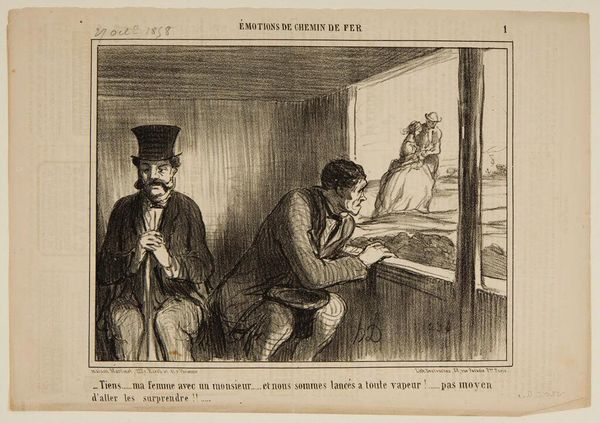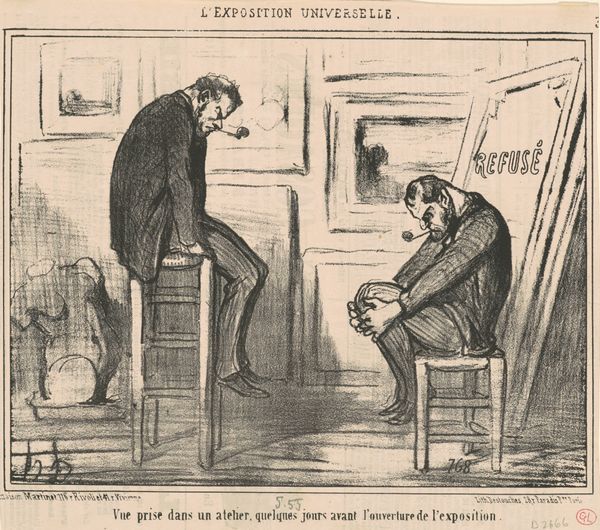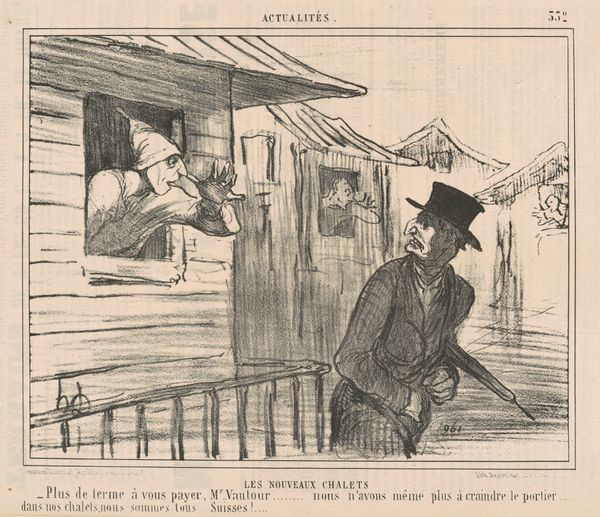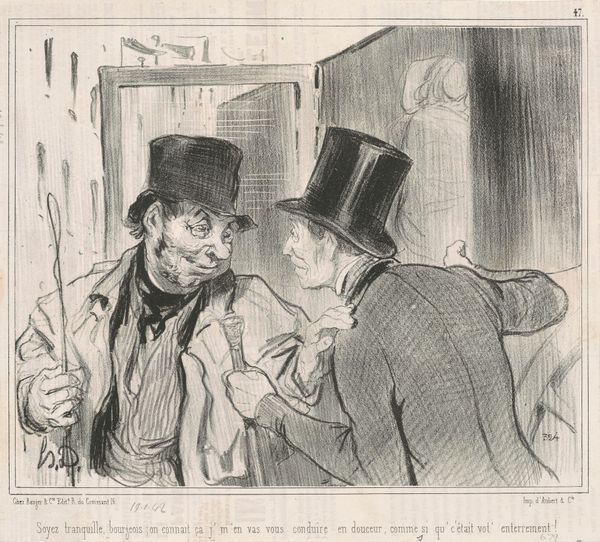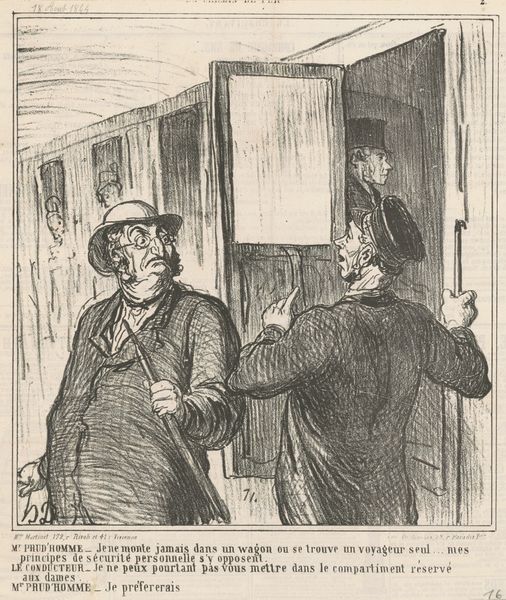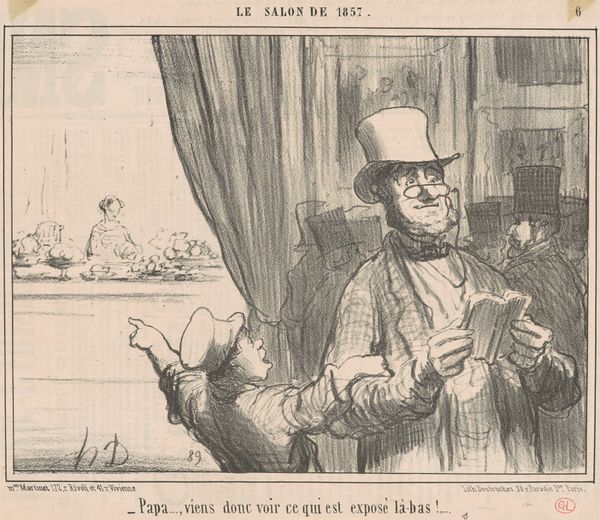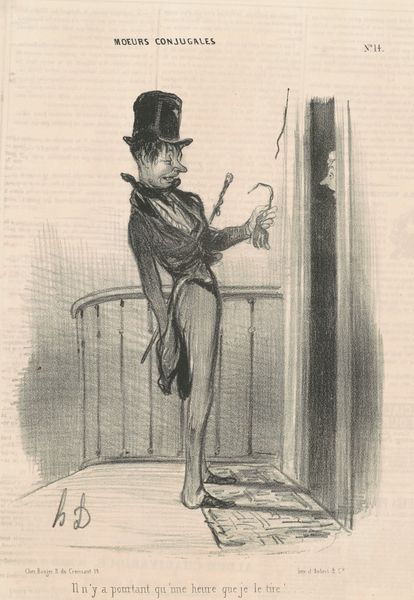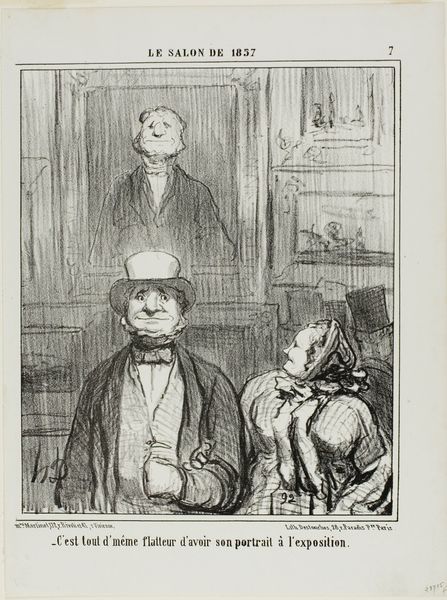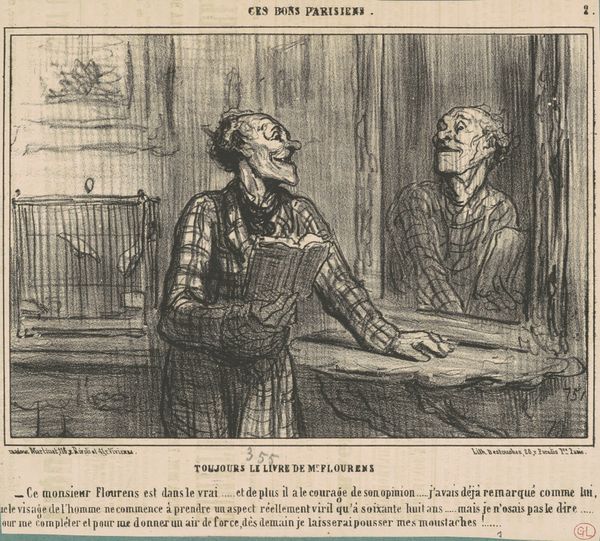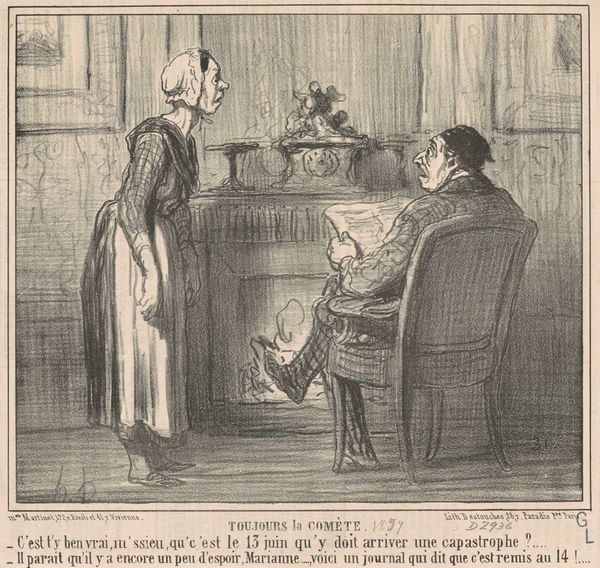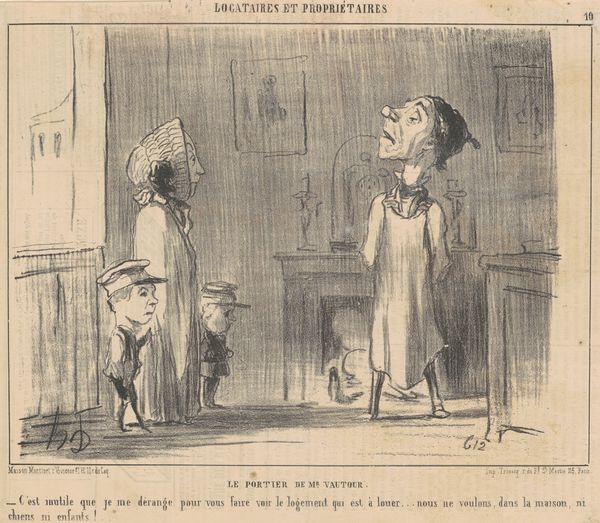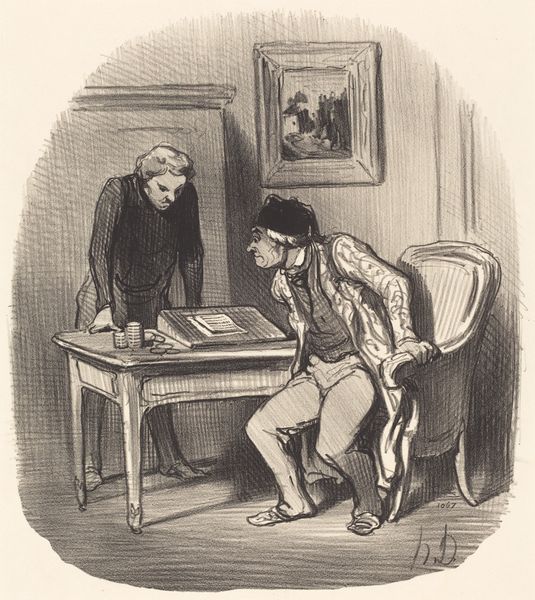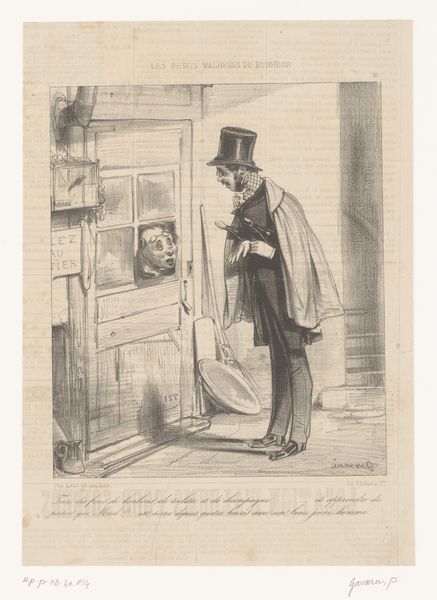
lithograph, print
#
narrative-art
#
lithograph
# print
#
caricature
#
figuration
#
romanticism
#
genre-painting
Copyright: National Gallery of Art: CC0 1.0
Editor: So, this lithograph by Honoré Daumier, dating from the 19th century, is titled "Tiens... ma femme avec un monsieur..." It's incredibly narrative. I immediately get a sense of unfolding drama, perhaps even a touch of dark humor. How do you interpret this work? Curator: It's a powerful piece that speaks volumes about the social mores and anxieties of 19th-century France. Daumier was a master of social commentary, and he used caricature to expose the hypocrisies of the bourgeoisie. Notice the visual language, how the cuckolded husband in the train is sharply defined versus the romanticized, soft depiction of the wife and her companion through the window. It begs the question: what public role did Daumier envision for his art, and what political forces might have shaped the image? Editor: That’s a keen observation about the contrast in styles! I hadn't considered the deliberate nature of those choices, but now it seems so obvious. Was Daumier challenging the romanticized notions of love and marriage prevalent in art and society? Curator: Precisely. The print would have been reproduced in journals such as Le Charivari, reaching a broad audience. The comedy is very calculated to appeal to a certain public mood regarding marriage, class and fidelity, all under the heavy thumb of public opinion and potentially legal ramifications. How does Daumier use humor to get his social points across? Editor: The text beneath the image, basically narrating the husband's shocked realization, feels essential. It pushes it beyond just an observation and straight into pointed satire. Curator: Yes! And considering that context – its likely distribution, Daumier's wider portfolio of satirical lithographs, and the strictures of the time – the work's punchiness becomes much more pronounced. His social and political opinions regarding social inequalities were central to his art. Editor: This makes me think differently about the power of prints as tools of social critique in that era. Thank you! Curator: Indeed! Considering the print as more than just a picture but as a cultural object circulating in a specific time period opens up a fascinating avenue for inquiry.
Comments
No comments
Be the first to comment and join the conversation on the ultimate creative platform.
